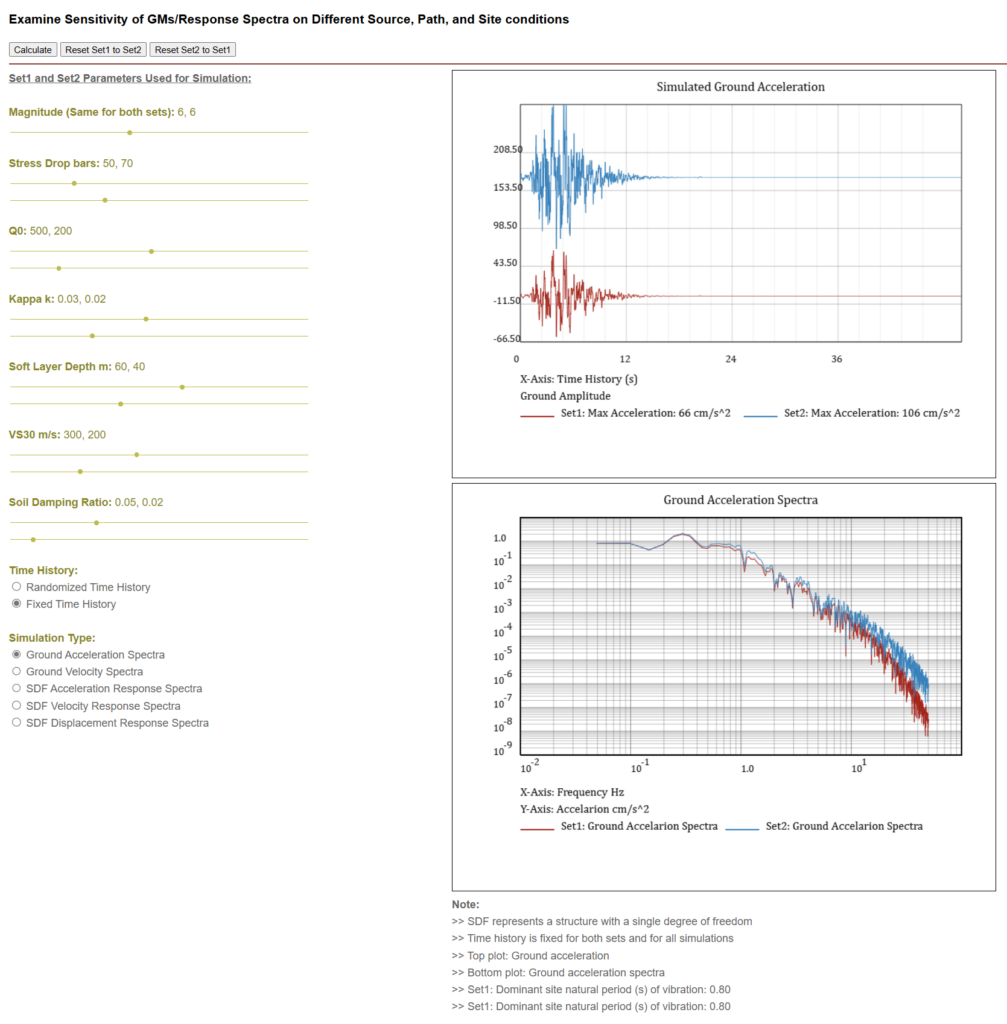- Sand Box: Ground Motion & Response Spectral Analysis
- Earthquake Ground Motion and Response Spectral Analysis: Technical Details
Reliable estimations of earthquake ground motions and response spectra are critical components of earthquake hazard analysis. During the last few decades, engineer seismologists have developed several physical and empirical models for this purpose, often referred to as ground motion prediction equations (GMPEs). Most such models are fairly complex and are formulated based on seismologists understanding of the earthquake GM generation, seismic wave propagation within the crust and shallow soil layers, and the building responses to earthquakes ground motions among other things. Due to the complex nature of GMPEs, it is rather difficult to understand how different seismological processes would impact surface ground motions and response spectra. The primary objective of this page, the link, and the Sand Box is to help users better appreciate the building blocks of typical GMPEs and the impacts of source, path, and shallow soil conditions on surface GMs and building responses.
Figure 1 shows an image of the Sand Box page. The module is designed to simulate ground motions and response spectra for two sets of virtual earthquakes. Users can control the following set of parameters:
- Magnitude: Source parameter
- Stress drop: Source parameter
- Quality factor: Regional parameter
- Kappa: Local crustal parameter
- Shallow soil conditions: Local parameters
Visit the technical link for detailed info on these parameters. The simulation results can be visualized as the ground motion time history, upper panel, and surface response or the response spectra, shown on the lower panel. It should be noted that for the choice of ground acceleration and velocity, the lower panel displays the Fourier Transform of the surface acceleration or velocity, respectively.
The time histories are simulated using random vibration technique (RVT) as is formulated by Boore (1983). The “Randomized Time History” button will randomize the random number generation set used for GM simulation which results in a new GM and spectral patterns for each simulation. The “Fixed Time History” button will use the same set of random numbers for all new simulations. This makes it possible to decouple the impacts of model parameters from randomness in time history simulations on the GM and response spectral results.

Figure 1.